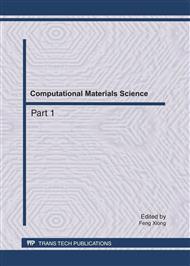p.726
p.732
p.737
p.742
p.747
p.753
p.759
p.764
p.772
The Study on Guanxi Structure of Colleagues in the Background of Chinese Culture and its Influence on Individual Job Performance
Abstract:
Based on the study on the literature, combined with interviews, this paper theoretically proposed four dimensions of the guanxi structure among colleagues in the background of Chinese culture (emotional, instrumental, obligations and face.) Through the data of 611 valid questionnaires from enterprises with different sizes and natures, the models of guanxi structure between colleagues are obtained ,which have Chinese cultural characteristics.Through regression analysis, we find that the guanxi between colleagues has a positive influence on individual job performance, but the guanxi does a different direction of the impact in sub-domains of job performance from the sub-domains of coworker guanxi, and the influences are also different.
Info:
Periodical:
Pages:
747-752
Citation:
Online since:
July 2011
Authors:
Keywords:
Price:
Сopyright:
© 2011 Trans Tech Publications Ltd. All Rights Reserved
Share:
Citation:


